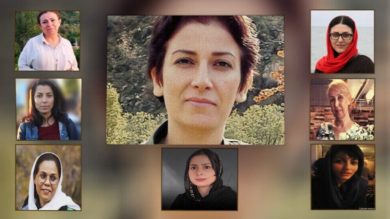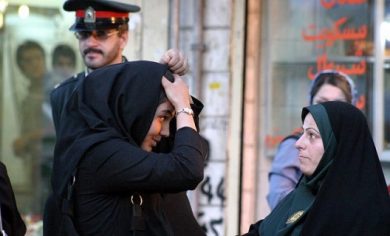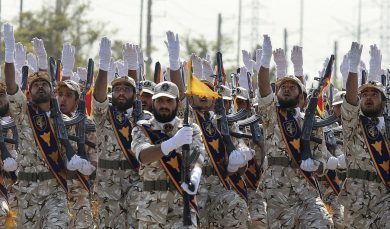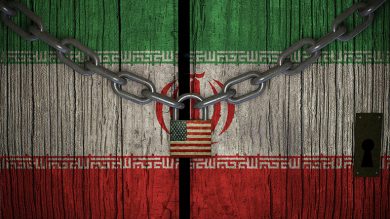The Islamic Revolutionary Guard Corps (IRGC), once established to defend the values of the 1979 Iranian Revolution, has evolved into one of the most powerful and unaccountable forces in the Middle East. What began as a revolutionary militia under Ayatollah Khomeini’s guidance has morphed into a sprawling, self-sufficient empire that wields enormous power across Iran’s military, political, economic, cultural, and judicial systems.
Today, the IRGC is more than a military entity—it is a state within a state, operating parallel to and above civilian institutions, bound by loyalty not to the constitution, but to the Supreme Leader himself. It influences everything from foreign policy and nuclear strategy to construction projects, telecom companies, and media platforms. And it does so without transparency, oversight, or meaningful accountability.
This report explores the IRGC’s transformation, its structure, its role in governance, and the global implications of its unchecked power.
1. Origins: Guardians of the Revolution
The IRGC was founded in May 1979 by order of Ayatollah Ruhollah Khomeini. While the regular army remained intact after the revolution, Khomeini feared it might stage a counter-coup or resist theocratic rule. He created the IRGC as a separate, ideologically loyal force tasked with:
• Defending the Islamic Revolution from internal and external threats
• Enforcing religious laws and revolutionary values
• Suppressing opposition, especially secular, leftist, and ethnic groups
The IRGC quickly gained power during the Iran-Iraq War (1980–1988), with thousands of young Basij volunteers fighting and dying on the front lines. This war served as both a crucible and a justification for the IRGC’s rise.
2. Structural Power: A Parallel Military Machine
Today, the IRGC operates with its own command chain, independent from Iran’s regular army (Artesh). It consists of several branches:
A. IRGC Ground Forces
Responsible for domestic security and border protection, often deployed during internal unrest.
B. Quds Force
The IRGC’s foreign operations wing, active in Lebanon, Syria, Iraq, Yemen, and beyond. It supports and trains proxy militias like Hezbollah and the Houthis.
C. Aerospace Force
Controls Iran’s ballistic missile program, drones, and parts of its space ambitions.
D. Navy
Active in the Persian Gulf, often responsible for intercepting foreign ships and provoking confrontations.
E. Basij Resistance Force
A paramilitary volunteer militia that acts as the IRGC’s ideological and social enforcement arm. Basij members are embedded in schools, mosques, and workplaces.
Together, these units form an independent, ideologically driven security architecture that reports directly to Supreme Leader Ali Khamenei, bypassing Iran’s elected government and civilian ministries.
3. Economic Domination: A Business Empire in Uniform
In the post-war era, the IRGC was granted massive contracts for rebuilding infrastructure. This opened the door to its economic takeover.
Key Entities:
• Khatam al-Anbiya Construction Headquarters: The IRGC’s engineering and industrial conglomerate, involved in major infrastructure, oil, gas, and transport projects.
• Mobin Trust Consortium: Controls Iran’s telecommunications infrastructure.
• Mehr Bank, Ansar Bank: Financial institutions linked to IRGC interests.
• Front companies and holding groups: Thousands of companies are directly or indirectly owned by the IRGC through opaque ownership structures.
Estimated Reach:
• Controls up to 30–40% of Iran’s GDP
• Receives no external auditing
• Wins government contracts without public tenders
These businesses not only enrich the IRGC but also fund its extraterritorial operations and internal suppression—creating a self-financing system of state repression.
4. Political Influence: More Powerful Than the President
The IRGC is not just an economic or military power—it is a political kingmaker.
In Government:
• Many former IRGC commanders hold senior political positions, including ministers, governors, and parliamentary seats.
• Presidents like Mahmoud Ahmadinejad and Ebrahim Raisi rose to power with IRGC backing.
• The IRGC interferes in elections by disqualifying reformist candidates and rigging outcomes through intimidation and influence.
In Policy:
• Shapes foreign and security policy, especially on issues like nuclear negotiations and regional interventions.
• Pressures parliament and judiciary through its intelligence arm.
• Controls the vetting process for candidates through the Guardian Council (aligned with the Supreme Leader).
Effectively, civilian oversight has collapsed. No branch of government can restrain the IRGC’s power without risking confrontation with Khamenei’s inner circle.
5. Intelligence and Internal Repression
The IRGC operates its own intelligence agency—distinct from the Ministry of Intelligence—which has become one of Iran’s most feared institutions.
Responsibilities:
• Monitoring dissidents, journalists, students, and activists
• Conducting surveillance on the diaspora and foreign embassies
• Running secret prisons like Ward 2A at Evin Prison
• Interrogating political prisoners and extracting confessions under torture
This intelligence arm has been central to the crackdowns on:
• The 2009 Green Movement
• The 2017–2018 economic protests
• The November 2019 fuel protests (where over 1,500 people were killed)
• The 2022–2023 Woman, Life, Freedom movement
6. Media and Ideological Control
To maintain its authority, the IRGC also controls the narrative.
Tools:
• Fars News Agency and Tasnim News Agency: IRGC-run outlets promoting regime propaganda
• Film, television, and social media monitoring through Basij-affiliated agencies
• Online disinformation campaigns and digital censorship via the National Information Network
• Cyber units conducting phishing, spyware deployment, and hacking of dissidents
The IRGC uses media not just to inform—but to surveil, intimidate, and indoctrinate.
7. Exporting Power: The Quds Force and Regional Militancy
Outside Iran, the IRGC operates as a state exporter of armed resistance and terror.
Key Areas:
• Iraq: Backing militias like Kataib Hezbollah and influencing politics in Baghdad
• Syria: Supporting Bashar al-Assad through Quds Force officers and militias
• Lebanon: Longtime funders and trainers of Hezbollah
• Yemen: Supplying arms and intelligence to the Houthi rebels
• Palestinian territories: Supporting Islamic Jihad and Hamas
These proxies have attacked U.S. troops, Israeli civilians, Gulf allies, and international shipping—serving Iran’s geopolitical ambitions while keeping the IRGC’s hands “indirect.”
8. Transnational Repression: Threats Beyond Borders
The IRGC has targeted Iranian activists and journalists around the world.
Tactics:
• Surveillance and intimidation of diaspora activists
• Assassination plots and abduction attempts (e.g., Masih Alinejad in the U.S.)
• Cyberattacks and psychological warfare
• Attacks on exiled opposition groups in Europe
These operations are carried out with the complicity of embassies and front organizations, violating international law and diplomatic norms.
9. Impunity and International Inaction
Despite its crimes, the IRGC continues to operate with impunity, partly because:
• The EU, UK, and Canada have not fully designated the IRGC as a terrorist organization
• Many countries prioritize nuclear diplomacy over human rights
• IRGC front companies are not properly monitored or sanctioned
• Iran’s economy is so intertwined with the IRGC that some fear instability if it collapses
Meanwhile, the victims—political prisoners, executed protesters, exiled journalists—remain without recourse.
10. The Consequences of Inaction
Allowing the IRGC to continue unchecked poses major risks:
• To Iranians: Continued repression, executions, and imprisonment of dissenters
• To the region: Endless proxy wars and sectarian conflict
• To the world: Escalating attacks on embassies, ships, and civilians
• To global security: A state-backed terror network shielded by diplomacy
Without international accountability, the IRGC will grow bolder, not weaker.
Conclusion: Dismantling the Shadow State
The IRGC is not just part of Iran’s system—it is the system. A militarized elite answerable only to the Supreme Leader, sustained by economic monopoly and fueled by ideological fanaticism.
To imagine a free Iran, one must first confront the reality that there is no reforming the IRGC. There is only containment, exposure, and ultimately, dismantlement.
Join Our Newsletter!
Stay informed with the latest updates, news, and ways to take action in the fight for justice and global security. Sign up now to get updates delivered straight to your inbox!





